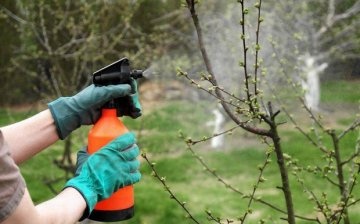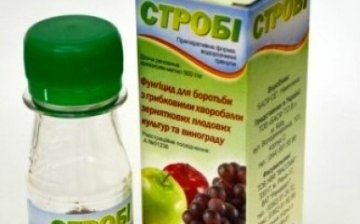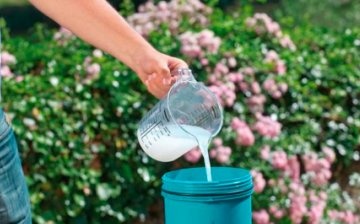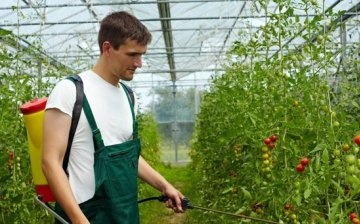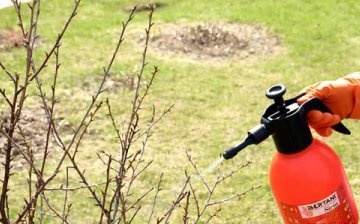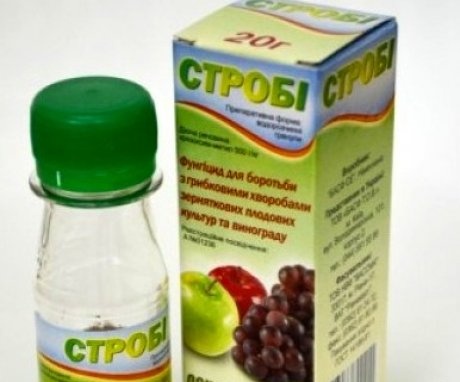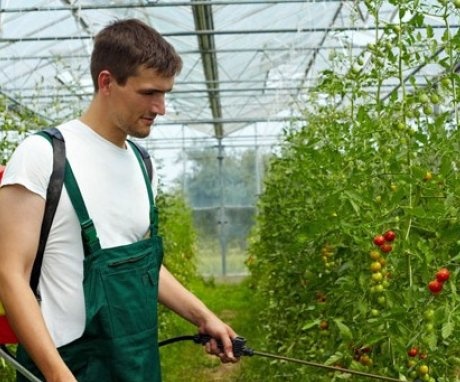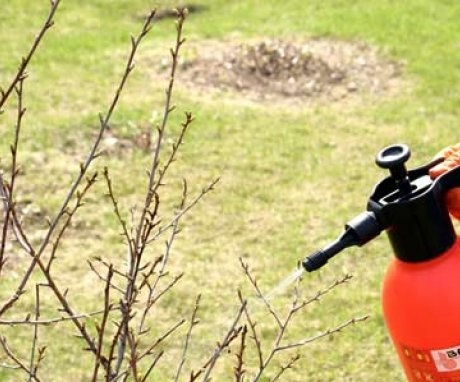Stroby drug - fight against fungal diseases of plants
With improper care and non-compliance with the pre-sowing seed treatment, as well as for other reasons, plants can be affected by fungal diseases... At the moment, a unique drug Strobi, developed by BASF (Germany), has appeared on the market, which acts on a wide range of pathogenic microorganisms and thereby replaces several different fungicides at the same time.
Content:
- Description and benefits of the drug
- Application methods for flowers
- Application for vegetable crops
- Use for garden trees
Description and benefits of the drug
A new generation drug, Strobi, has a wide range of effects on pathogens of fungal diseases of plants. The drug actively acts on mushrooms on the leaves, stops the growth of mycelium (mycelium) and sporulation.
Strobe effectively prevents disease outbreaks by preventing spores from germinating.
Thanks to this quality, the drug helps to fight diseases that arise as a result of spore germination. Fungicide Strobi belongs to the type of strobilurins: these are substances that inhibit cellular respiration by acting on enzymes specific to the fungal flora.
Effecting in very small quantities on fungi, they are practically harmless to other organisms. This is the main advantage and main disadvantage of strobilurins, since fungi have the ability to mutate and become invulnerable to the entire class of drugs at once. Therefore, when using this drug for the best effect, follow the recommendations described in the instructions.
The advantages of Strobi are:
- Even distribution of the product over the surface of the sheet.
- Impact on the entire sheet, even when processing one side of it, due to penetration into the inside.
- Strong resistance to rain: light and heavy rainfall will not wash off the product.
- Safety for bees.
- Resistant to temperature changes.
- Wide range of applications.
- Possibility of using in flowering plants.
- Low level of toxicity for animals.
Strobi can be used against plant diseases such as:
- White spot
- Brown spot
- Ring spot
- Dry spot
- Black spot
- Phytophthora
- Phomopsis sunflower
- Mealy growth
- Mildew
- Leaf spot
- Black
- Tinder
- Alternate rot
- Bitter rot
- Gray rot
- Scab
- Rubella
- Rust
- White rust
- Mildew
- Pallid pea ascochidosis
- Pea pod spotting
- Phytophotorosis (brown rot of fruits)
- Stem rot
- Anthracnose
- Stemphiliosis
- Gray mold
The results of studies on the residual amount of the drug in fruits showed that Strobi was not detected in cereals, and the drug content in apples was very insignificant. When the drug gets into the ground, it quickly decomposes. The fungicide does not penetrate deeply into the soil, therefore, there is no pollution of water bodies.
The drug retains its protective properties after processing:
- With an average infection - 10-14 days
- With a strong infection - 7-10 days.
The action of the Strobi fungicide is manifested depending on the type and degree of the disease: from 2 hours to 2 days.
Application methods for flowers
When growing flowers, Strobi is used to combat powdery mildew and rust. Prepare a solution of the drug at the rate of 5 grams of fungicide per 10 liters of water. The maximum effectiveness of the Strobi solution is maintained during the first two hours after preparation, so you should try to use it during this time. During the growing season, spray flowers with a sprayer. This procedure must be done 2 or 3 times with an interval of 10 days.
For roses, spray not only the leaves, but also the soil around the bush.
Have garden roses processing is carried out twice a month, starting from July 1, and immediately before the shelter for the winter. In the treatment of fungal diseases in flowers, Strobi is used only in combination with other drugs (for example, Topaz). Before and after using Strobi, fungicides with a mechanism of action different from that of strobilurins should be used. The next year after using Strobi, you cannot use preparations based on strobilurins.
Application for vegetable crops
The treatment of vegetable crops with the Strobi fungicide is carried out during the growing season. The solution is made in a proportion of 2 grams of fungicide per 10 liters of water. Dry and calm weather is best suited for processing.
The drug Strobi is super effective in combating diseases of tomatoes such as powdery mildew and late blight (a real scourge for this plant), diseases of pepper and morokov - powdery mildew, brown spot, cucumbers - peronosporosis, and others.
The treatment is carried out by spraying vegetable plants. It is recommended to use Strobi together with other fungicides (Abiga-Peak, Quadris). That is, treatment is carried out with the Strobi preparation, then with another fungicide, then Strobi again. After a year, others should be planted in place of the treated plants.
Spraying of vegetable crops is carried out twice during the growing season. The waiting period, that is, the time from the moment of the last treatment to harvesting, for crops growing in closed and open ground differs:
- For tomatoes and cucumbers grown outdoors - 10 days
- For tomatoes indoors - 5 days
- For cucumbers indoors - 2 days.
Use for garden trees
In the fight against malicious diseases fruit trees (scab, powdery mildew) Strobi fungicide significantly slows down the germination of spores, as a result of which the disease stops. Another effect of the drug is the prevention of other fungal diseases and protection from fruit rot during storage.
When scab is destroyed on fruit trees, you can notice such an effect as greening the leaves.
Fruit trees are treated with Strobi during the growing season up to three times per season. Trees sprayed a solution prepared in a proportion of 2 grams of Strobi per 10 liters of water. The solution consumption is per 1 m of tree height. Processing is carried out at intervals of two weeks. The use of the drug should be alternated with other fungicides: Skor, Cumulus DF, Bordeaux mixture. The last processing of trees must be carried out at least 35 days before harvest. harvest.
Fungicide Strobi is toxic: when working, follow the precautions specified in the instructions.
Be sure to use gloves, goggles and work clothes, which must be changed at the end of the treatment and then washed after soaking in a soap and soda solution. In case of contact with skin or eyes, rinse thoroughly with water, if swallowed, rinse the stomach, rinse out mouth and call a doctor. After treatment with Strobi, you can work with plants after 3 days.
More information can be found in the video.



